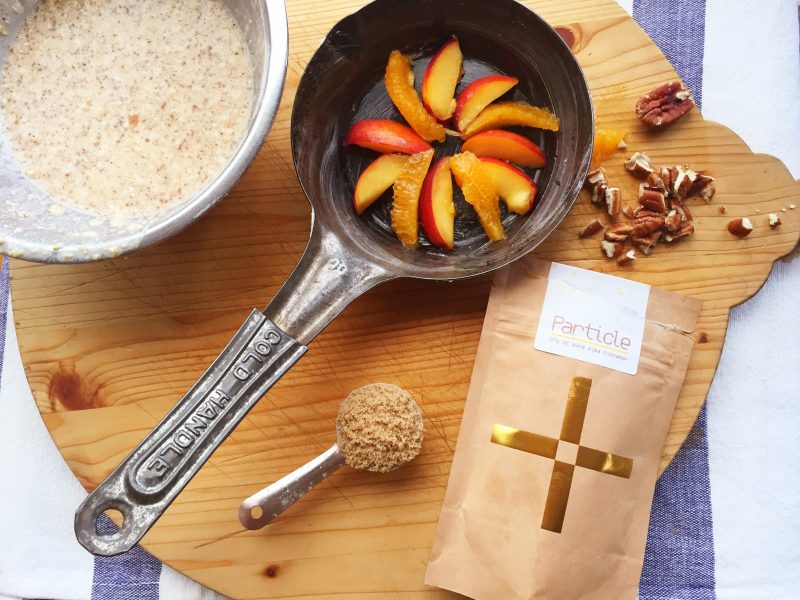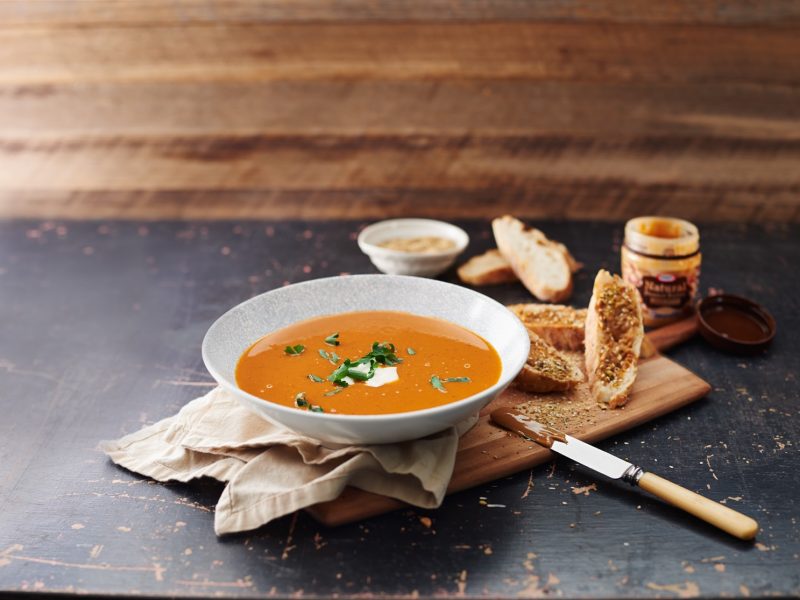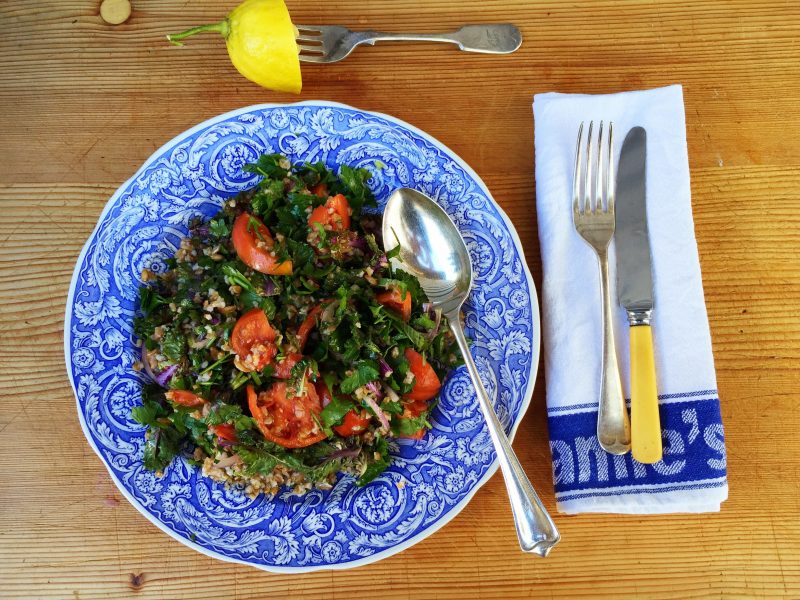It’s hard to believe that August has come to an end. We’ve had a big month, launching our Scoop Supporter program, Twitter chat #EatKit and having our first Sub of the Month on board, Chef Nutritionist Mel Haynes. We’ve loved Mel’s culinary nutrition insights and enjoyed having her in the press room. So as she gets set to pass the baton, it was timely to capture her top cooking tips.
About our expert:
Mel Haynes is a chef and recent graduate of the Masters in Human Nutrition from Flinder’s University. She works as a private consultant in Adelaide, Australia where she consults to hospitality, businesses and the public. She specialises in culinary nutrition, recipe modification and cooking classes.
Let’s face it, fat is a chef’s best friend. Duck fat for roasting potatoes, butter for hollandaise and pastry, sumptuous crispy pork belly, lardons for the tenderest roasts…need I say more. As a nutritionist I now see the health problems with a diet high in fat, especially cholesterol raising saturated fat. And I’ve enjoyed getting my hands dirty in new ways in the Kitchen Klinic. You see it’s easy to add fat to make a dish taste delish, but you have to be far more creative and clever to arrive at healthier fare that still has full flavour.
Why is it that we like fat in our diet so much?
To answer this question, we need to examine the science behind our favourite macronutrient. Our sense of taste you see is mostly understood though our sense of smell. Our main tastes of sweet, salty, sour, bitter and umami (glutamate or “meaty”) are picked up by our tastebuds but it’s believed that the rest of our amazingly discriminating palate stems from our olfactory senses. Most smells and especially food smells are fat soluble. Think lemon zest, frying bacon, vanilla, roast nuts, & grilled cheese. The problem with a very low fat diet is that we lose so much of the flavour from our dishes, because there is no longer the solvent needed to activate our noses!
Smart approaches
Good news though, all the science links poor health outcomes with saturated fat so its ok to use a little healthy fat in moderation. The key to kitchen nutrition is to lighten up when you can, ues smaller quantities of quality, high fat ingredients and flavour, flavour, flavour with culinary herbs, spices, citrus zest and more. Here are my top tips:
- Switch to low or reduced fat dairy – that’s milk, yoghurt & cheese. When cooking with cheese, see the light or use a stronger flavoured cheese like reggiano or parmesan which means you can cut back on the quantity.
- Cream up your favourite pasta dishes using light cream cheese with 5% fat content and a little bit of cooking wine. Much less fat that regular cream and just as much flavour.
- Choose lean cuts of meat and baste with fresh herbs and olive oil. The oil will help keep the cut tender.
- Slow cook your meat and fish. This is another way to keep it tender as it gives time for the sinews and tendons to relax. It also protects conjugated linoleic acids (CLA’s) which may help prevent clogged arteries.
- Decant your oils into a spray bottle or use commercially available spray oils when pan frying or roasting. A little oil goes a long way!
- Try par-boiling your chip potatoes and coating in lightly beaten egg whites before baking on an oven tray. You can skip any added oil altogether. Thanks to Heather for this top tip on our facebook page last week.
- Replace coconut milk / or cream with evaporated light milk with added coconut essence. Unlike regular milk, the low fat varieties of coconut milk are just a watered down version. So another option is to choose a small can of the real deal, use half the qauntity and freeze the left overs in icecubes trays.
- Try Meatless Mondays and include some lentils, chickpeas, tofu or veggie mince for a naturally low fat meal.
- Replace bacon with low fat ham when cooking. Alternatively use prosciutto, which has a much stronger flavour, and reduce to ¼ of the quantity and cut off the fat and rind.
- Make dishes with minced meat using kangaroo or mixing 50/50 with lentils, finely chopped vegetables or veggie mince. Its hard to pick the difference in taste but its lower in fat and better for the environment.
- Use good quality non-stick cookware – that way you wont need to add as much oil to prevent food from sticking and burning.
- Switch meat for fish at least twice per week for more omega 3’s and less saturated fat.
- Poach meat, fish and chicken in water & herbs, wine, stock or milk as a great way to get flavour into food without the fat.
- Use low fat Greek style yoghurt as a substitute for sour cream.
- Wrap meat or fish in alfoil or baking paper to keep in the flavour. Try adding herbs and vegetables to the parcel such as lemon, thyme and orange to fish and capsicum, mushroom and Tabasco to red meat.
- Replace up to 50% of butter in most cake recipes with apple sauce, yoghurt or low sugar jam.
- Make your own stock – refrigerate and remove the solid fat from the top prior to use. Home made stock can be made with controlled salt content.
- Serve salads with dressings made with a little olive oil and baslsamic vinegar instead of heavy mayonnaises or commercial bottles. Adding a little drizzle of olive oil to your salad tastes great, is good for your health, and when combined with the vinegar can lower the GI of your meal.
Editor’s comment:
Thanks Mel. It’s been great having you on board. We look froward to watching your culinary nutrition career grow and wish you the utmost success with your cooking classes. We have a little honorarium on the way to you thanks to our first Scoop Supporter Ocean Spray. And I’ve picked out the perfect thank you gift – Taste #5 Umami Paste which is available in Australia via Jones the Grocer or at Amazon. So over to you dear readers. Do you have a question for Mel? Or a favourite tip for reducing fat in the kitchen? Love to hear your ideas in the comments below.


